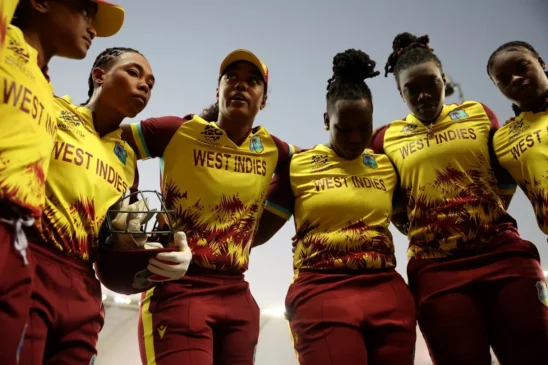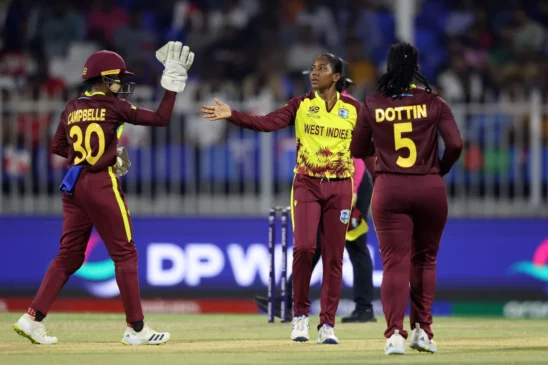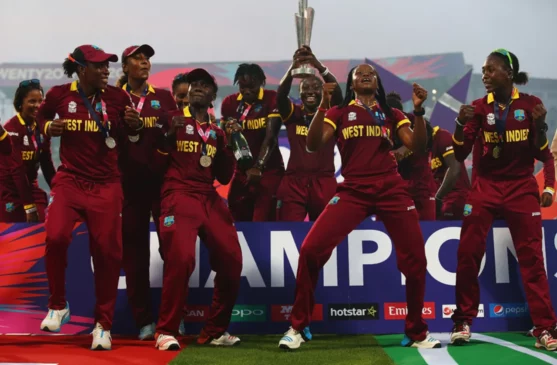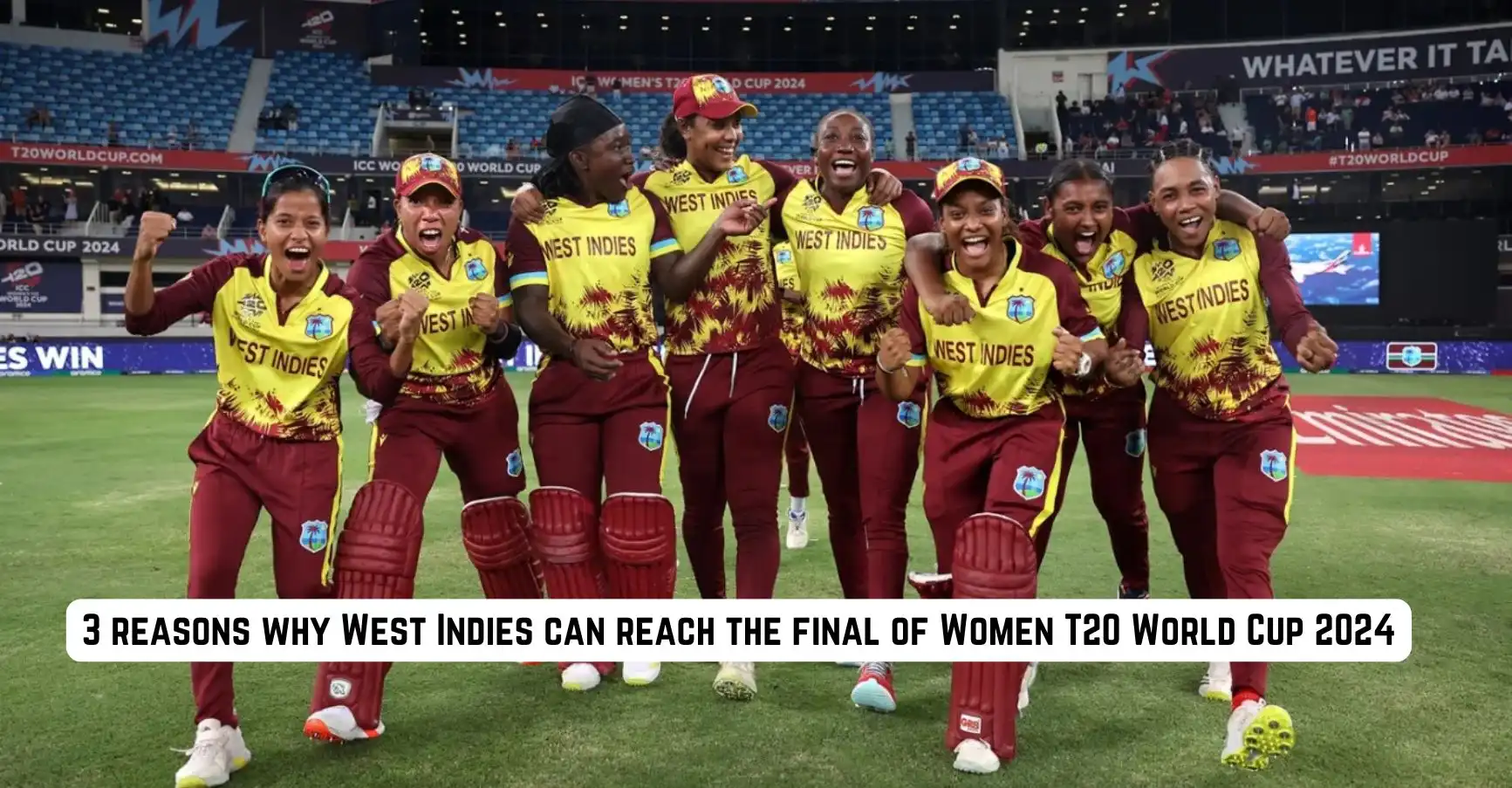Table of Contents
West Indies have been on a remarkable journey in the Women’s T20 World Cup 2024. In a must-win encounter against England, they delivered a sensational performance to secure a spot in the semi-finals. Playing in Dubai, the Windies chased down England’s challenging target of 142 with ease, knocking out one of the tournament favorites in the process.
Dynamic opening pair leads West Indies to victory
The match-winning effort was spearheaded by the dynamic opening pair, with captain Hayley Matthews scoring a brilliant 50, complemented by an equally impressive 52 from Qiana Joseph. Both players attacked from the start, putting pressure on the English bowlers and setting the tone early for a memorable victory that booked their place in the knockout stage.
West Indies set to face New Zealand in semi-final
With this victory, West Indies will now face New Zealand in the second semi-final, while Group B’s top team, South Africa, are set to take on the defending champions Australia in the first semi-final. Although the Windies were not initially viewed as serious contenders, their stunning run in the tournament has proven otherwise. Here are three reasons why the Women in Maroon can advance to the final of the Women’s T20 World Cup 2024.
Also READ: West Indies edge past England to reach the semifinals of the Women’s T20 World Cup 2024
3 reasons why West Indies can advance to the final of the Women’s T20 World Cup 2024
1. Inspirational leadership of Hayley Matthews

One of the biggest assets for West Indies is the exceptional leadership of Matthews. The all-rounder has been a crucial figure, not only with the bat but also with the ball, and her captaincy has been instrumental in guiding the team through tense situations. Matthews’ aggressive mindset and ability to take charge in critical moments have inspired her teammates to raise their game. Her experience, combined with her dynamic playing style, makes her an invaluable asset and a driving force behind West Indies’ success.
Throughout the tournament, Matthews has led from the front, anchoring the batting line-up while also providing vital breakthroughs with the ball. Her calm and composed presence on the field has been key in tough matches, and her leadership skills will be critical if West Indies are to make it to the final.
2. Combination of youth and experience

The West Indies team boasts a balanced mix of seasoned campaigners and emerging talents, which has proven to be a winning formula. Veterans like Stafanie Taylor and Deandra Dottin bring a wealth of experience, having played in numerous high-pressure matches. Their calmness and tactical awareness add a layer of stability to the team.
On the other hand, players like Joseph, Zaida James, and Ashmini Munisar add youthful energy and a fearless approach to the game. This blend of experience and young talent allows the team to adapt and strategize effectively against various opponents, making them versatile and unpredictable. The youthful exuberance of the new players, combined with the steadiness of the veterans, enhances their chances of success as they prepare for the crucial semi-final match against New Zealand.
3. Experience of winning the event before

The West Indies Women’s team has the experience of lifting the Women’s T20 World Cup, having clinched the title in 2016. This past success gives them a psychological edge, as several players from that winning squad are still part of the current team. Players like Matthews, Taylor, and Dottin were integral to that victory and understand the nuances of performing under pressure on the biggest stage.
Their experience of winning a global tournament is invaluable, as they can draw on past memories to motivate themselves and their teammates. This experience could be a game-changer, especially when the matches get tighter and the stakes get higher. It provides the team with the belief that they can overcome any challenge and reach the pinnacle of success once more.
Also READ: 3 key reasons behind Team India’s early exit from Women’s T20 World Cup 2024
This article was first published at WomenCricket.com, a Cricket Times company.
